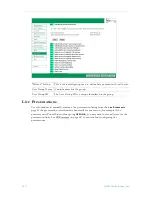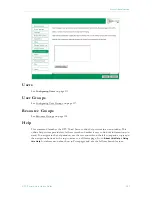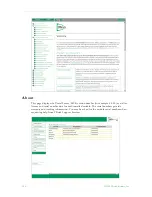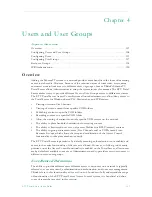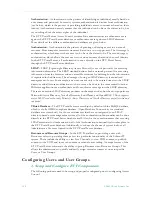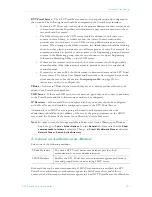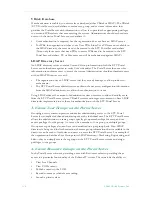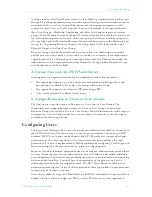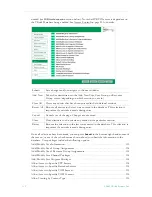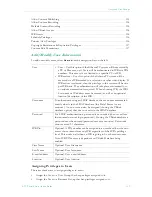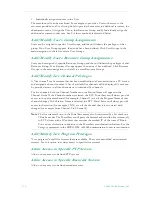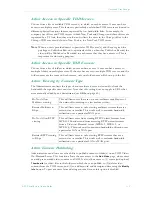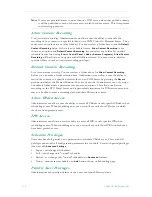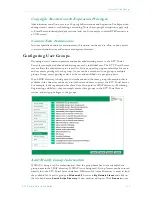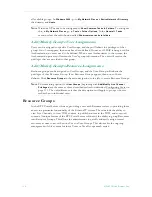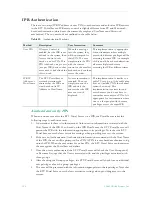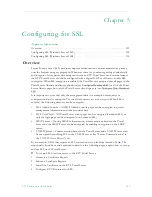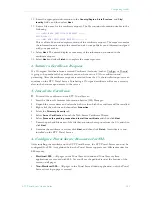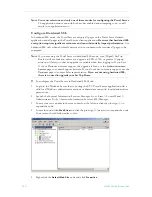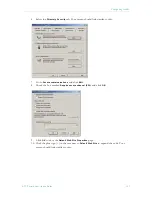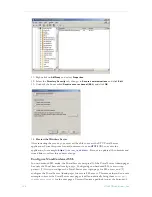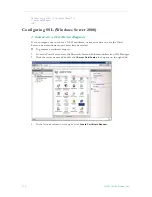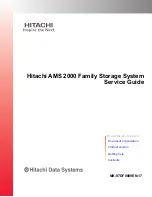
Users and User Groups
ETV Portal Server Admin Guide
115
Allow Access to Specific VOD Servers
Choose from a list of available VOD server(s) to which a user has access. A user can have
access to multiple servers. This feature is particularly useful when VOD servers are located in
different physical locations that are separated by low bandwidth links. For example, if a
company has offices and VOD servers in both New York and Chicago, and these offices are
separated by a T-1 link, then they would want to limit the users in the Chicago office to the
Chicago VOD server and those in New York to the New York VOD server.
Allow Access to Specific VOD Content
Choose from a list of folders to which a user can have access. A user can have access to
multiple folders on multiple servers. If the user has access to multiple VOD servers, and the
folder names are the same on both servers, only one folder name will show up in the list.
Allow Viewing by Content Type
The Administrator can limit the types of content that a user can view and/or limit the
bandwidth that specific users can view. Note that this setting does not apply to URLs that
were manually added by an administrator (see URLs on page 63).
Allow Content Publishing
Administrators can allow a user the ability to publish content to folder(s) on an VOD Video-
On-Demand Server. This function allows the user access to the
Add Video
page, where users
can add pre-recorded video content to a VOD. It also allows users to (1) create (and upload)
Thumbnails
for video files in the folders to which they can publish, to (2) delete video
content from the VOD server, and (3) to add keyword and description data using the
Modify
Info
button. To prevent users from deleting content, be sure this option is disabled.
Note
When a user is provided access to particular VOD server(s), and they are given the
privilege to Publish or Record to a particular folder, when they Publish or Record, the
video will be Published or Recorded to each server that they have access to. This is
important for clustering purposes.
Do Not Allow
Multicast viewing
This will limit users that are on a non-multicast capable part of
the network from trying to view multicast video.
Restrict Multicast to
Kbps
This will limit users to only viewing multicast streams that are a
certain size or smaller. This works well to maintain bandwidth
utilization over a particular WAN port.
Do Not Allow RTSP
viewing
This will limit users from viewing RTSP Unicast Streams from
MPEG-4 Encoders and from accessing RTSP unicast streams
from a Video-on-Demand server (MPEG-1, MPEG-2, or
MPEG-4). This works well to maintain bandwidth utilization over
a particular LAN or WAN port.
Restrict RSTP viewing
to Kbps
This will limit users to only viewing RTSP streams that are a
certain size or smaller. This works well to maintain bandwidth
utilization over a particular LAN or WAN port.
Summary of Contents for ETHERNETV V4.4.3
Page 12: ...xii Preface ...
Page 90: ...78 2009 VBrick Systems Inc ...
Page 118: ...106 2009 VBrick Systems Inc ...
Page 134: ...122 2009 VBrick Systems Inc ...
Page 152: ...140 2009 VBrick Systems Inc ...
Page 164: ...152 2009 VBrick Systems Inc ...
Page 186: ...174 2009 VBrick Systems Inc ...
Page 202: ...190 2009 VBrick Systems Inc ...
Page 215: ......
Page 216: ...VBrick Systems Inc 12 Beaumont Road Wallingford Connecticut 06492 USA ...


